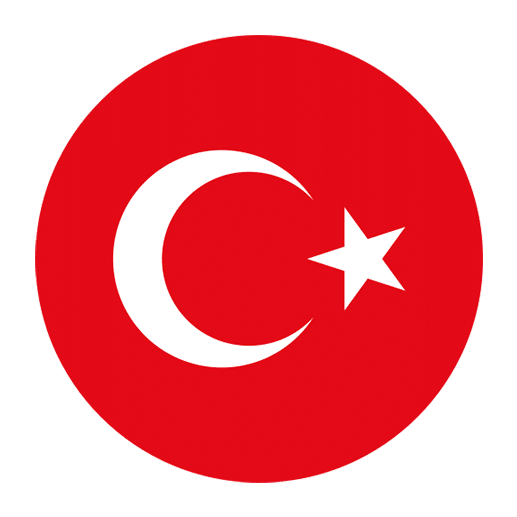The Turkish language, with its rich historical background and distinct grammatical structure, often presents unique challenges and intriguing elements for language learners. One such fascinating aspect is the formation and use of comparative adjectives. Understanding how to form and use comparative adjectives in Turkish can significantly enhance your fluency and comprehension. This article aims to guide you through the intricacies of Turkish comparative adjectives, from their formation to practical applications in everyday conversation.
Understanding Comparative Adjectives
Comparative adjectives are used to compare differences between two objects, people, or situations. In English, we often use the suffix “-er” or the word “more” to form comparatives, such as “bigger” or “more interesting.” Similarly, Turkish uses specific rules and structures to form comparative adjectives, allowing speakers to express comparisons effectively.
Basic Formation of Comparative Adjectives
In Turkish, comparative adjectives are generally formed by adding the suffix “-daha” before the adjective. This structure is quite straightforward and can be applied to a wide range of adjectives. Here are some examples:
– Büyük (big) -> Daha büyük (bigger)
– Küçük (small) -> Daha küçük (smaller)
– Güzel (beautiful) -> Daha güzel (more beautiful)
The word “daha” essentially means “more” in English and serves the same purpose in comparative structures.
Examples in Sentences:
– Bu ev daha büyük. (This house is bigger.)
– Senin araban daha küçük. (Your car is smaller.)
– Bu çiçek daha güzel. (This flower is more beautiful.)
Forming Comparatives with Irregular Adjectives
While most adjectives follow the simple rule of adding “daha,” some adjectives are irregular and do not follow this pattern. These adjectives have unique comparative forms that must be memorized. Here are some common irregular adjectives:
– İyi (good) -> Daha iyi (better)
– Kötü (bad) -> Daha kötü (worse)
– Az (few/little) -> Daha az (fewer/less)
– Çok (many/much) -> Daha çok (more)
Examples in Sentences:
– Bu kitap daha iyi. (This book is better.)
– Bu film daha kötü. (This movie is worse.)
– Bu meyve daha az. (This fruit is less.)
– Bu insanlar daha çok. (These people are more.)
Using Comparative Adjectives in Complex Sentences
Once you are comfortable with forming basic comparative adjectives, you can start using them in more complex sentence structures. This involves comparing two different subjects within the same sentence.
Comparing Two Subjects:
When comparing two subjects, the particle “dan” or “den” (depending on vowel harmony) is used after the second subject to indicate the object of comparison.
– Bu kitap daha ilginç kitaptan. (This book is more interesting than that book.)
– Senin evin daha büyük benim evimden. (Your house is bigger than my house.)
Examples in Sentences:
– Ali daha çalışkan Ahmet’ten. (Ali is more hardworking than Ahmet.)
– Bu elbise daha pahalı diğer elbiseden. (This dress is more expensive than the other dress.)
Special Cases and Exceptions
While the rules mentioned above cover most scenarios, there are some special cases and exceptions that learners should be aware of.
Elative Adjectives
In Turkish, elative adjectives are used to express a higher degree of a quality without directly comparing two subjects. This is similar to using “very” in English. The suffix “-ce” or “-ca” is added to the adjective.
– Büyük (big) -> Büyükçe (quite big)
– Küçük (small) -> Küçükçe (quite small)
Examples in Sentences:
– Bu oda büyükçe. (This room is quite big.)
– Bu köy küçükçe. (This village is quite small.)
Using “En” for Superlatives
Though not directly related to comparatives, understanding superlatives can complement your knowledge of comparatives. The word “en” is used to express the highest degree of a quality, similar to “most” or “-est” in English.
– Büyük (big) -> En büyük (biggest)
– Küçük (small) -> En küçük (smallest)
– Güzel (beautiful) -> En güzel (most beautiful)
Examples in Sentences:
– Bu bina en büyük. (This building is the biggest.)
– Bu çocuk en küçük. (This child is the smallest.)
– Bu şehir en güzel. (This city is the most beautiful.)
Practical Applications
Understanding the formation of comparative adjectives is crucial, but applying them effectively in conversation is equally important. Here are some practical tips and common phrases that will help you use comparative adjectives more naturally.
Common Comparative Phrases
– Daha iyi olur (It would be better)
– Daha zor (More difficult)
– Daha kolay (Easier)
– Daha ucuz (Cheaper)
– Daha pahalı (More expensive)
Examples in Conversations:
– Bu yöntem daha kolay. (This method is easier.)
– Yeni telefonum daha pahalı. (My new phone is more expensive.)
– Bu proje daha zor olacak. (This project will be more difficult.)
Comparative Adjectives in Daily Life
Using comparative adjectives in daily conversations can significantly improve your fluency and make your interactions more meaningful.
Examples in Daily Conversations:
– Market: “Bu elma daha taze mi?” (Is this apple fresher?)
– Restaurant: “Bu yemek daha lezzetli.” (This dish is more delicious.)
– Travel: “Bu otel daha rahat.” (This hotel is more comfortable.)
– Shopping: “Bu elbise daha şık.” (This dress is more stylish.)
Practice Exercises
To solidify your understanding, it’s essential to practice forming and using comparative adjectives. Here are some exercises that you can try:
Exercise 1: Forming Comparatives
Transform the following adjectives into their comparative forms using “daha”:
1. Hızlı (fast) -> __________
2. Zengin (rich) -> __________
3. Akıllı (smart) -> __________
4. Temiz (clean) -> __________
Exercise 2: Comparing Two Subjects
Fill in the blanks with the correct comparative adjective form and the particle “dan/den”:
1. Senin araban __________ (fast) benim arabamdan.
2. Bu çanta __________ (cheap) o çantadan.
3. Oda __________ (big) bu odadan.
4. Bu kitap __________ (interesting) o kitaptan.
Exercise 3: Creating Sentences
Create sentences using the following comparative adjectives:
1. Daha güzel (more beautiful)
2. Daha zeki (smarter)
3. Daha uzun (taller)
4. Daha tatlı (sweeter)
Conclusion
Mastering the formation and use of Turkish comparative adjectives is a crucial step towards achieving fluency in the language. By understanding the basic rules, special cases, and practical applications, you can effectively compare objects, people, and situations in your conversations. Regular practice and exposure to native speakers will further enhance your skills and confidence. So, keep practicing, and soon you’ll find yourself using comparative adjectives in Turkish with ease and precision. Happy learning!

